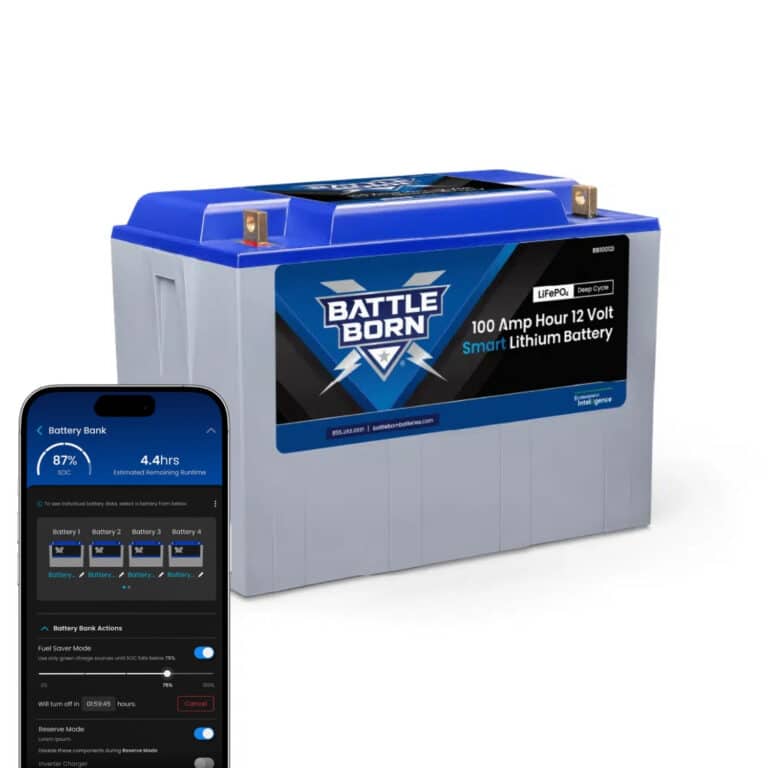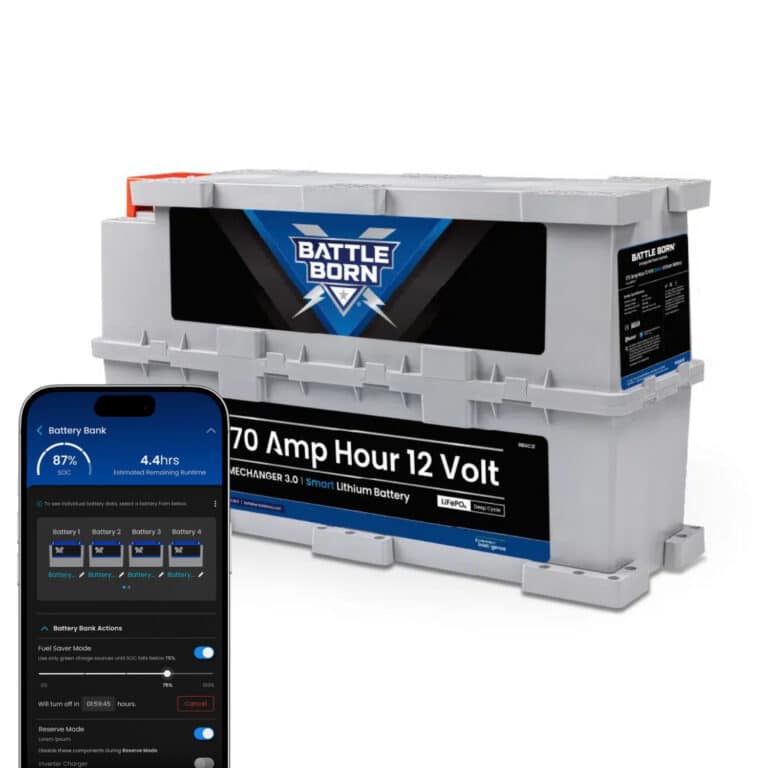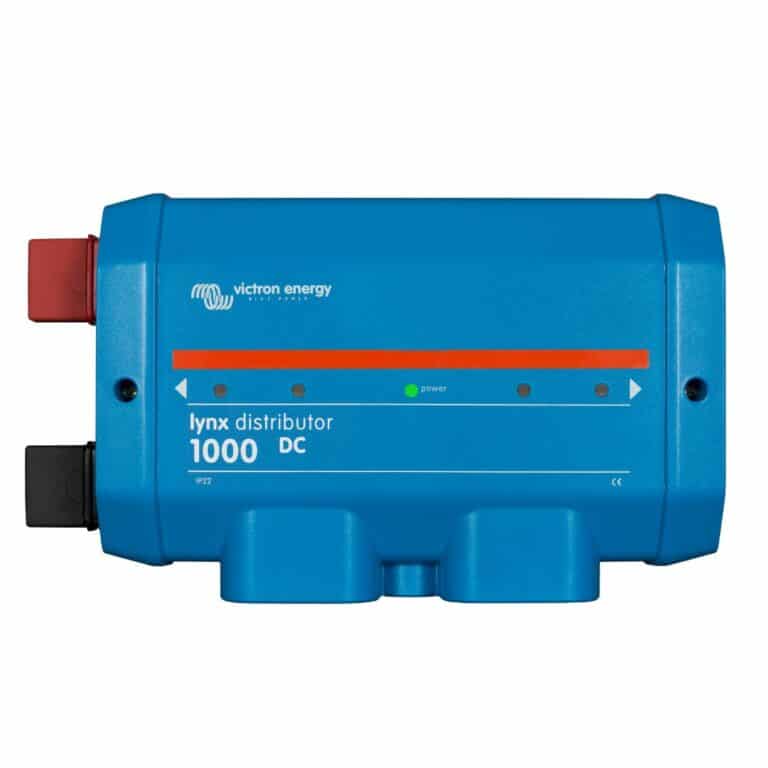
MENUMENU
TALK TO AN EXPERT
Special Hours: 7AM – 6PM PST
TALK TO AN EXPERT
Special Hours: 7AM – 6PM PST
Lithium-ion batteries have reshaped how we use and store energy. You’ll find them everywhere from aircraft and satellites to laptops and smartphones. Their technology also plays a pivotal role in our transition to cleaner energy use, such as in electric vehicles and renewable energy storage.
But there are many questions about how green lithium-ion batteries really are. Here, we look at the environmental impacts of lithium-ion battery technology throughout its lifecycle and set the record straight on safety and sustainability.
Lithium-ion batteries offer a high energy density, long cycle life, and relatively low self-discharge rate. These properties make them ideal for use in electronic devices, electric vehicles (EVs), and energy storage systems.
They are typically made of graphite and a metal oxide like cobalt, nickel, or manganese, working to store and release energy through the movement of lithium ions between two electrodes.
While lithium-ion batteries offer remarkable advantages, there are concerns about their environmental footprint. For instance, how manufacturers mine and process the metals and dispose of the batteries. We separate fiction from fact to uncover the truth about lithium-ion technology’s ecological imprint.
There are several new findings around lithium-ion batteries. But first, let’s set the record straight on some misconceptions.

Many believe that lithium-ion batteries are toxic because of the materials they contain. Numerous electric vehicles use cobalt-containing batteries, which are known for their high costs and environmental and social impacts.
However, advancements in battery chemistry have led to the development of cobalt-free and environmentally friendly alternatives. Researchers have created a new lithium-ion battery material that uses organic materials rather than cobalt or nickel. This can provide a more sustainable power source for EVs.
It’s also important to note that EV batteries are different from the lithium-ion batteries used to store energy.
Lithium-ion battery production contributes to carbon emissions, primarily due to the energy-intensive processes of mining, processing, and assembling the materials. However, the carbon emissions vary depending on the energy sources used in manufacturing. It’s also essential to look at the bigger picture.
Manufacturing a typical EV can create more carbon pollution than making a gasoline car. However, an EV has fewer total greenhouse gas emissions (GHGs) over its lifetime than a gasoline vehicle. That’s because EVs produce no tailpipe emissions and usually have a much lower impact on GHG emissions during operation. Using renewable energy sources (wind and solar) to generate electricity further reduces the total GHG emissions from electric vehicles.
When compared to other energy storage technologies like lead-acid batteries or nickel-metal hydride batteries, lithium-ion batteries tend to have a lower carbon footprint over the entire life cycle. This is due to its higher energy density, longer cycle life, and better performance. These factors all offset the initial carbon emissions incurred during production.
As technology advances and manufacturing processes become more energy-efficient, the carbon emissions associated with lithium-ion battery production will decrease further, making them a more sustainable choice.
Because most EVs, laptops, smartphones, and renewable energy storage use lithium-ion batteries, the battery market is skyrocketing. Global mining operations struggle to extract enough necessary elements to meet this demand, and recycling lithium-ion batteries is critical.
Battery manufacturers have been hesitant to use recycled materials due to concerns about lower quality, which could shorten or damage battery life. The consequences of poor-quality batteries could be serious, especially in applications like electric vehicles.
However, new research has confirmed the opposite with advanced recycling techniques. Batteries that use a new cathode-recycling method work just as well as those manufactured from raw materials. In fact, batteries made from recycled cathodes charge faster and last longer.
With popular myths debunked, let’s get into the facts.

Lithium-ion batteries can move us toward a sustainable society in several ways. For one, they can store energy generated from renewable sources like solar and wind power. This helps to balance supply and demand, reduce reliance on fossil fuels, and support the transition to a cleaner energy grid.
By powering EVs, the technology provides a more environmentally friendly alternative to traditional combustion engine vehicles. This reduces both GHG emissions and air pollution in the transportation sector.
With the advancements in battery reuse technologies, lithium-ion batteries contribute to a circular economy. They recover valuable materials and reduce the environmental impact of battery disposal and the extraction of raw materials.
Ongoing research and development in the field of lithium-ion batteries aim to make them more eco-friendly through cobalt reduction, energy-efficient production, and solid-state battery technology.
Manufacturers have developed cobalt-free cathode materials such as lithium iron phosphate (LFP). They also use renewable energy sources and minimize waste during battery production.
Solid-state battery technology is being explored as a safer and more environmentally friendly alternative to conventional liquid electrolyte lithium-ion batteries. Solid-state batteries use solid electrolytes, which can improve battery safety, energy density, and longevity. They also reduce the risk of electrolyte leakage and environmental contamination.
Conventional recycling methods often involve burning or chemically dissolving batteries. These methods harm the environment and can’t efficiently recover lithium and cobalt. This leads to an ongoing reliance on unsustainable mining practices and strained supply chains. The good news is that researchers have developed a new, more sustainable way to recycle these batteries.
The approach involves soaking spent batteries in a solution of organic citric acid and ethylene glycol. This combination is a safe and effective way to separate and recover critical metals from the battery's cathode. The method reduces the use of hazardous chemicals and significantly cuts down the processing time and energy typically required in traditional recycling methods.
What’s more, the new technique achieves near-total recovery of metals like cobalt and lithium without introducing contaminants. And because no additional chemicals are needed to recover metals, it also reduces costs and minimizes the generation of secondary waste.
This breakthrough could lead to more sustainable practices in battery production and disposal. It aligns with broader environmental goals, reduces dependency on raw material extraction, and contributes to a circular economy.
Research efforts and technological advancements are driving the evolution of lithium-ion batteries toward a more eco-friendly and sustainable energy storage solution.
Battle Born Batteries uses advanced technologies and lithium iron phosphate (LiFePO4) units to provide dependable green energy solutions across multiple markets. Our technical specialists can recommend the best units for your system.
Whether you need long-term storage for off-grid setups, battery upgrades, or power for land or water trips, our sustainable solutions come with lifetime technical support. Reach out today to learn more.
Shop Best Sellers








Ask a technical specialist now at 855.292.2831
Stay in the Know
Take our short Customer Survey for a chance to …
WIN a $300 Visa Gift Card
One thought on “The Environmental Impact of Lithium-Ion Batteries: Myths vs Facts”
Your writing has a way of making even the most complex topics accessible and engaging. I’m constantly impressed by your ability to distill complicated concepts into easy-to-understand language.